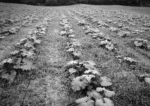Advertise Follow Us
Ron Ross
Ron Ross pioneered the “What I’ve Learned from No-Tilling” series that has appeared in every issue of No-Till Farmer since August of 2002. He authored more than 100 of these articles.
A graduate of South Dakota State University’s agricultural journalism program, Ross spent most of his career as a writer and editor.
ARTICLES
Continuous No-Till Really Does Pay
Washington No-Tillers Connect Sustainable Farming With Consumer Attitudes
With 70 Sweet Corn Varieties, Timely Planting Is Critical
No-Till Saves $35 To $40 Per Acre
No-Till Frustrations Lead To No-Till Success
Develop Market Strategies Around Successful No-Tilling
You Can’t Make Mistakes With No-Till — Or It Won’t Work!
With No-Till, Growers Like What They See
No-Till Is Good For Everyone!
Top Articles
Current Issue
No-Till Farmer
Get full access NOW to the most comprehensive, powerful and easy-to-use online resource for no-tillage practices. Just one good idea will pay for your subscription hundreds of times over.
No-Till vs. Mud, Fire & Water Facebook Videos
Twin-Row Cereal Rye Adds 35-Bushel Advantage in No-Tiller’s Irrigated Corn
Add Covers, Subtract Inputs & Multiply Profits with Systems Approach to No-Till
Must Read Free Eguides
Download these helpful knowledge building tools
- How No-Till Improves Your Land Value
- 5 Pillars for No-Till Farming Effectively, Efficiently
- Making the Precision Basics Even Better with Implement Guidance
- Focusing on Smarter, Sustainable Fertilizing Strategies
Videos
Last-Minute Planter Prep for No-Tillers & Strip-Tillers
On this episode of Conservation Ag Update, brought to you by Martin-Till, precision specialist Chad Baker, co-owner of Baker Precision Planter Works in Orangeville, Ill., helps a first-generation no-tiller with planter setup, and later encounters a couple problems with a strip-tiller’s new 24-row planter. Plus, veteran agronomist Brad Forkner checks in with a couple tips for farmers to keep in mind before they take the field.
















